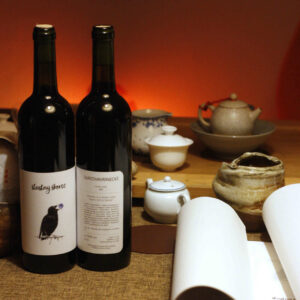In this section, I would like to introduce an interesting point of view on the substances contained in tea from trees of different age and in regards to their metabolism. It was originally written by Chinese author Isundust at the www. puer.cn website. I must admit that the author possesses ample knowledge of tea trees and their functioning. In regards to tea plant cultivation, he is emphasizing factors influencing the growth such as shading, temperature, watering, soil composition, use of fertilizers, orientation, and altitude. Then he points out that as the food absorption and the metabolism is changing in humans with the age (for example that of youngsters is vigorous and that of old people is slow), the same may apply to plants, just in a different manner, and therefore substances contained in tea leaves are changing through the absorption and metabolism of the tea plant with its age.
Tea trees aged 0-30 years have relatively vigorous nitrogen metabolism and produce a large amount of nitrogen-related products such as amino acids, proteins, tea polyphenols, etc. Therefore, tea trees that are young are fresher but less sweet.
Trees over 30 years old have obvious carbon metabolism and produce large amounts of monosaccharides (such as glucose, fructose, ribose, etc.), oligosaccharides (such as maltose, sucrose, raffinose, etc.), and polysaccharides (glycogen, starch, chitin), hyaluronic acid, hemicellulose, etc.), glycoproteins, proteoglycans and glycolipids. Therefore, the bitterness in the tea leaves is low, and the sweetness and mellowness are good.
Generally speaking, carbon metabolism and sweetness are becoming more obvious with the growing age. Since the post-fermentation of raw Pu’er tea is closely related to the sugar content of tea leaves, mature buds and older tea tree buds will age better, so some people prefer ancient tree tea and big tree tea. In fact, for tea trees over 30 years old, if the ecological environment is not bad and the number of pickings is small, then it is more difficult to distinguish trees of 30 and 50 years, and trees of 70 to 80 years.
The biochemical difference between plantation bushes, small trees, old trees, ancient trees, big trees, and thousand years old wild tea trees is that they have different metabolisms. Nitrogen metabolism is obvious when trees are young, and carbon metabolism is obvious when trees are old.
According the taste of tea, Isundust prefers raw sheng Pu’er tea with a sense of sweetness gained with ageing years. The first sweetness is interlinked with the age of the tree, and the second is the sweetness brought by the ageing process. For ordinary consumers, the taste of eco-tea trees of 30 years is already very good.
Isundust is also suggesting an unorthodox method of steeping tea and observation of the sweetness of tea infusions:
Pick three grams of tea from the same tea area, the same variety, the same quality of leaves, the same season and steep in 250 ml fresh boiling water for five minutes. Drink it when it gets cold, the good sweetness will be more obvious in the tea from older trees. Because the fructose contained in the tea leaves increases the sweetness of tea infusion at lower temperatures, it will then gradually increase the sweetness of infusion at temperatures below 40°C and decrease the sweetness of infusion above 40°C.4
Here I have a bit mingled understanding of what the author want to say about the “same” tea area etc. It seems like he is making a comparison between two ways of preparing tea – the hot and cold version. However, later he is describing the infusion after “it gets cold”, so I need to make my own observation of this technique and come with conclusion.
Or may “you the reader” write your opinion that?



